China and Covid19
From Peaches to Pears: 3 Natural Food Remedies Trending on Chinese Social Media in Times of Covid Outbreak
Even though experts suggest that natural food remedies won’t prevent or cure Covid, Chinese netizens believe in the power of peaches.
Published
2 years agoon
By
Zilan Qian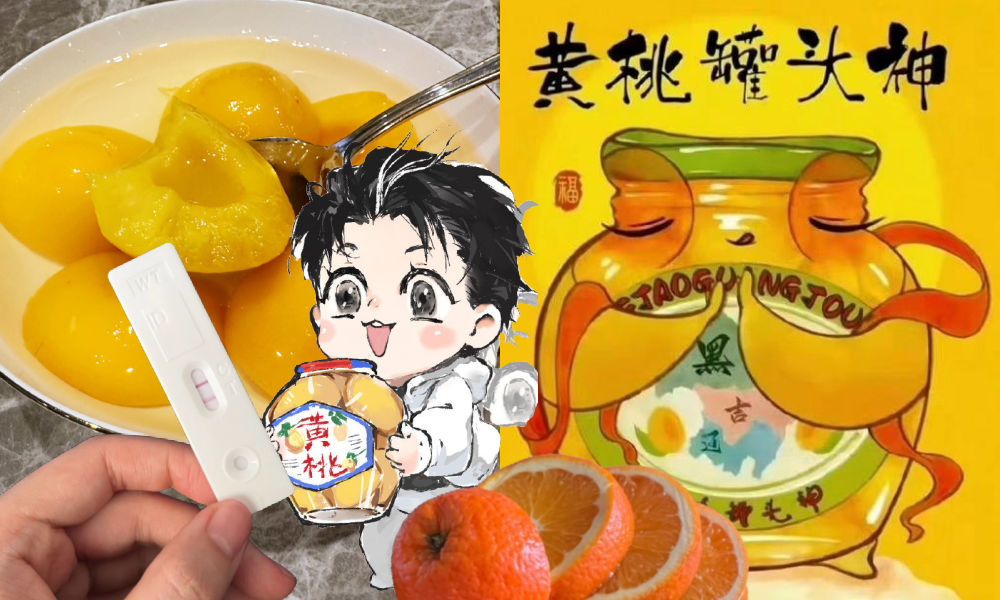
Coughing, fever, sore throat; during China’s current Covid outbreak, the ways to alleviate the most common symptoms have become an everyday topic on Chinese social media. Food remedies are a recurring trending topic. Here are three natural food remedies that have become popular (again) over the past few weeks.
In December of 2022, during the rapid spread of Covid-19 across China after the country let go of its ‘zero Covid’ policy, fever and cough medicine were selling out fast. Some Covid patients turned to foods and drinks to help soothe Covid symptoms.
The following types of food have become especially popular on Chinese social media over the past few weeks.
1. Canned Yellow Peaches (黄桃罐头)
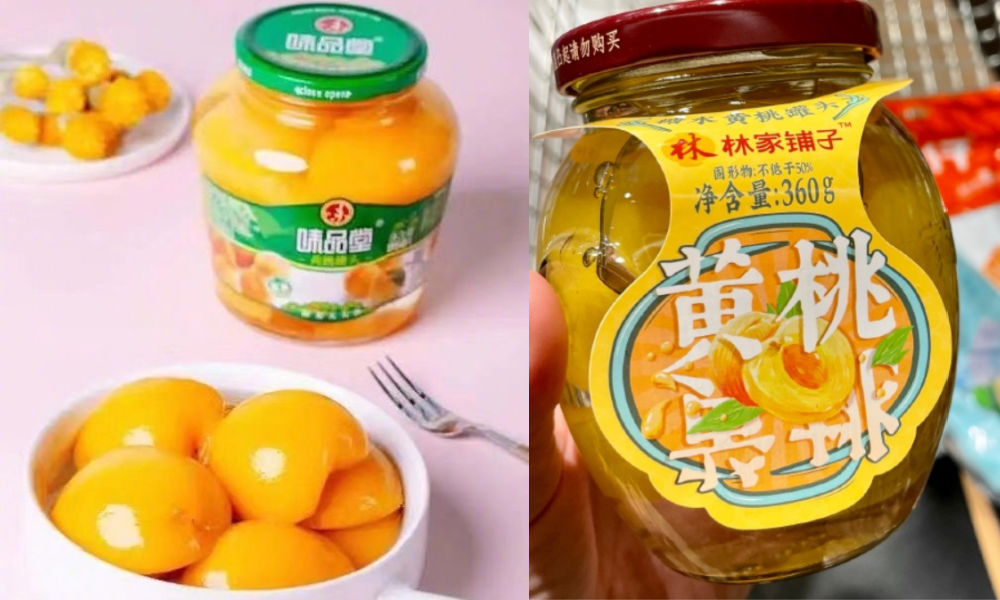
In December, when the number of Covid-19 infections spiked throughout China, canned yellow peaches suddenly received significant attention. Under the Weibo hashtag “Canned Yellow Peaches, the Mysterious Power from the East” (#东方神秘力量黄桃罐头#), netizens shared how canned yellow peaches helped them recover from Covid-19, describing it as “the god of children from Northeastern China” that “blessed every Northeastern Chinese child.” Some even joked that the government should include canned yellow peaches in the public health insurance package.

Netizens praising the effect of canned yellow peaches in alleviating diseases. Image from a post on Zhihu.
Although many state media quoted experts’ claims that canned yellow peaches cannot fight Covid-19 symptoms and might even worsen coughing, most netizens still believe in the power of peaches.
While most people acknowledge that natural food remedies aren’t always effective, they are seemingly unanimously against the “experts’ advice.” Under Pengpai News’ Weibo post and hashtag “Experts Claim Canned Yellow Peaches Might Worsen Cough” (#专家称黄桃罐头或加重咳嗽#),” some Weibo users commented that experts would not dare to discuss the supposed ineffectiveness of Lianhuaqingwen (traditional Chinese medicine that has become hot-selling during Covid outbreak) and thus criticize canned peaches instead.
Another commenter wrote: “Who would actually believe that canned yellow peaches can cure diseases? It is just like a placebo when we’re sick.”

A satirical comparison of the effects between canned yellow peaches and Lianhuaqingwen.
One popular image compared the effectiveness of canned yellow peaches and Lianhuaqingwen. According to the image, the former is tasty and hydrates, while also containing electrolytes and calories and serving as comfort food to people, whereas the latter is only capable of potentially having side effects for the kidney and liver.
Canned yellow peaches are a nostalgic comfort food, especially for people from Northeastern China. For the generations growing up during the 1970s and 1980s, canned yellow peaches are known as a ‘cure-all.’ In an era of food scarcity, canned yellow peaches were a sweet luxury that most children could only get when they were ill.
One commenter on Q&A platform Zhihu wrote: “Eating canned yellow peaches is a ritual.” Other netizens shared their childhood memories about the food – one commenter recalled how eating canned yellow peaches at the hospital after a car accident left a deep impression on them.

A Weibo post sharing ‘yellow peaches’ childhood memories. The user wrote about parents bringing canned yellow peaches as a gift for relatives who were ill: “At that time, we associated cans (of yellow peaches) with being sick.” (Originally from a Zhihu post.)
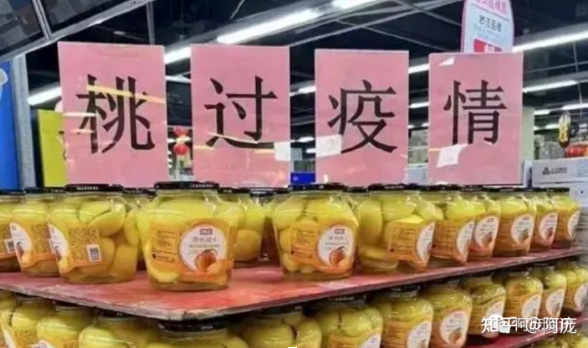
A supermarket sale of canned yellow peaches. The Chinese characters say “táoguò yìqíng,” actually meaning “escaping the pandemic,” but as a word joke, táo is written with character 桃 for peaches instead of 逃 for escape. Image from a Zhihu post.
Moreover, the name of the food has also come to be associated with recovering from Covid. As the character ‘桃’ (peach) sounds the same as the character ‘逃’ (escape), eating canned yellow peaches is also jokingly used in the context of ‘escaping’ from the epidemic.
2. Steamed Orange with Salt (盐蒸橙子)

Another food that gained popularity during the Covid-19 outbreak is steamed orange with salt, which is considered a more medicinal food remedy than canned yellow peaches. The food has since long been used as a Chinese folk prescription for sore throat. The widespread Covid-19 symptom of severe sore throat, sometimes also described as “swallowing blades” (喉咙吞刀片),” has made the folk prescription popular again.
Here is the cooking procedure according to many online posts: wash and soak the orange in salted water; cut the orange at ⅕ point from the top; spread ⅓ spoon of salt onto the remaining ⅘ oranges; put two parts of the orange together and steam (steaming time varies between posts from 20 min up to two hours); eat the orange with the peel and the rest of the water.
Contrary to canned yellow peaches, experts have acknowledged the benefits of eating salt-steamed oranges. According to a post released by Youth Hunan (青年湖南), the official Weibo account of the Communist Youth League of Hunan Province, some ‘experts’ state that the peel of salt-steamed oranges help alleviate discomforts in the throat, and the vitamin C can prevent and alleviate viral infections. In reports by other mainstream media, such as CCTV News, it is also claimed that salt-steamed oranges might be helpful, and that the salt can make the natural sugar taste sweeter.
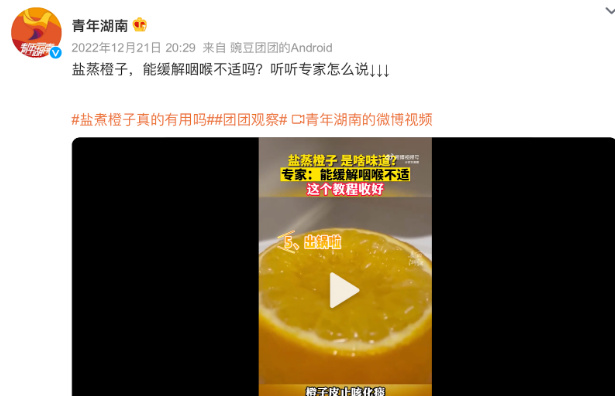
However, steamed oranges with salt are not as beloved among the public as canned yellow peaches. People’s comments on the effectiveness of salty steamed oranges vary. Some share that they stopped coughing after eating them, while others criticize it as having “no use at all,” or even exacerbating the pain.
Despite the disagreement on its effectiveness, most Weibo posts agree that steamed oranges with salt are just “not tasty” at all. Contrary to the CCTV report that suggested that salt brings out the sweetness of oranges, many describe the food as extremely bitter and sour to the extent of “crying while eating.”
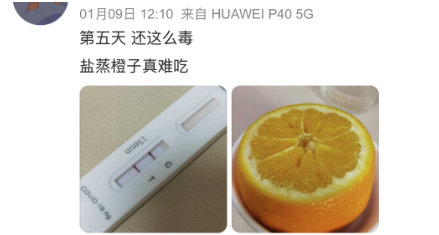
In online discussions about steamed oranges with salt, the distrust in expert opinions surfaced again. Although experts claim that the food is beneficial and alleviates symptoms, some netizens seem annoyed that it does not do anything for them at all: “I’ve been eating this for three days, not a damn change and it tastes disgusting.”
3. Stewed Pear with Rock Sugar (冰糖炖梨)
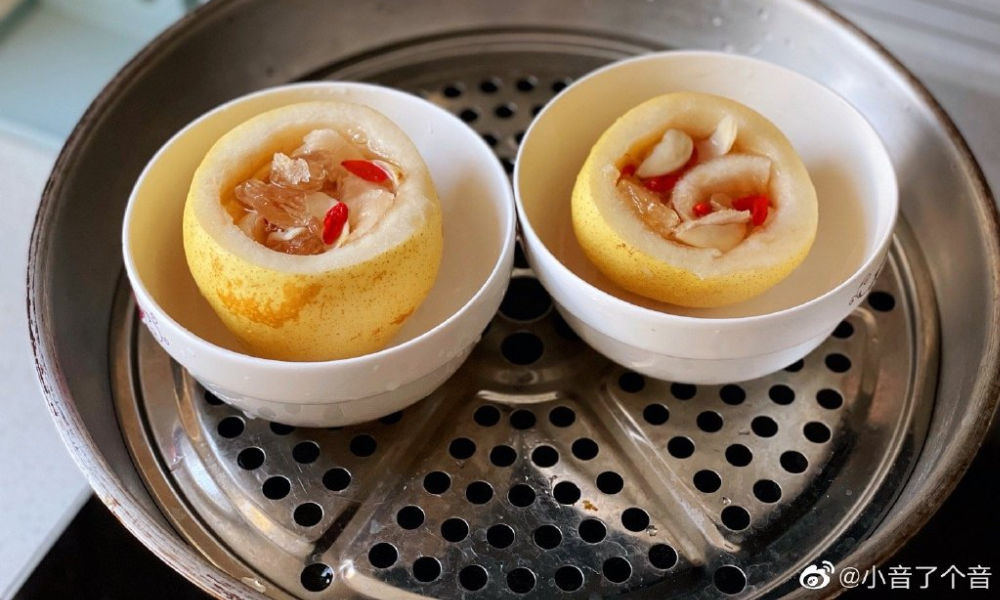
Besides canned yellow peaches and salty steamed oranges, many other kinds of food and folk prescriptions have also become trends during the Covid-19 outbreak. There’s salt-steamed lemons (盐蒸柠檬), boiled scallion water (葱白煮水), roasted oranges (烤橘子), white radish soup (萝卜汤), honeysuckle chrysanthemum tea (金銀花菊花茶) or brown sugar ginger tea (红糖姜茶), which is also commonly used to alleviate menstrual pain.
Among them, you’ll also find stewed pear with rock sugar (冰糖炖梨), which is commonly eaten to alleviate symptoms like sore throat and coughing as well reducing excessive phlegm. Many netizens indicate that it is something their parents made for them, and that it is sweet, warm, and comforting.
Recipes vary, but the pears, generally yellow pears (雪梨), can be either cooked or boiled and its core is then removed and filled with rock sugar as well as other optional ingredients, such as Chinese dates, dried Goji berries, or Sichuan peppers (see a recipe here).
Despite many people expressing their love for stewed pear with rock sugar, a recent article by the Taiwanese ‘Health 2.0’ site claimed that the food remedy is somewhat outdated as other ingredients are supposedly more effective against a persistent cough, such as daikon (combined with honey, rock sugar), which is also used as a home remedy for its antibacterial properties.
The advantages of many foods and folk prescriptions are still up for debate. However, recent related online discussions show that the comfort or even the placebo effect of certain food remedies are very important in the Covid-19 experience of many Chinese people. Some are 100% sure they work.
“One bite and it instantly made me feel better,” one commenter wrote about their homemade stewed pear. Some people admit they do not necessarily even mind if it really alleviates their symptoms or not: “It’s just so tasty!”
By Zilan Qian
with contributions by Manya Koetse
Follow @WhatsOnWeibo
Get the story behind the hashtag. Subscribe to What’s on Weibo here to receive our newsletter and get unlimited access to all of our articles:
Spotted a mistake or want to add something? Please let us know in comments below or email us. First-time commenters, please be patient – we will have to manually approve your comment before it appears.
©2023 Whatsonweibo. All rights reserved. Do not reproduce our content without permission – you can contact us at info@whatsonweibo.com.
Zilan Qian is a China-born undergraduate student at Barnard College majoring in Anthropology. She is interested in exploring different cultural phenomena, loves people-watching, and likes loitering in supermarkets and museums.

Also Read
China and Covid19
Sick Kids, Worried Parents, Overcrowded Hospitals: China’s Peak Flu Season on the Way
“Besides Mycoplasma infections, cases include influenza, Covid-19, Norovirus, and Adenovirus. Heading straight to the hospital could mean entering a cesspool of viruses.”
Published
8 months agoon
November 22, 2023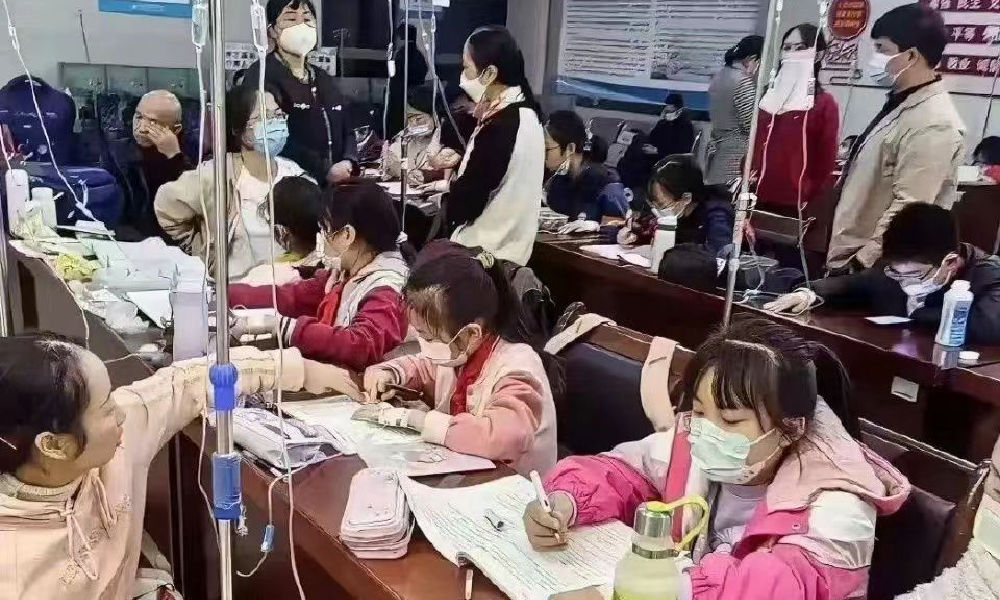
In the early morning of November 21, parents are already queuing up at Xi’an Children’s Hospital with their sons and daughters. It’s not even the line for a doctor’s appointment, but rather for the removal of IV needles.
The scene was captured in a recent video, only one among many videos and images that have been making their rounds on Chinese social media these days (#凌晨的儿童医院拔针也要排队#).
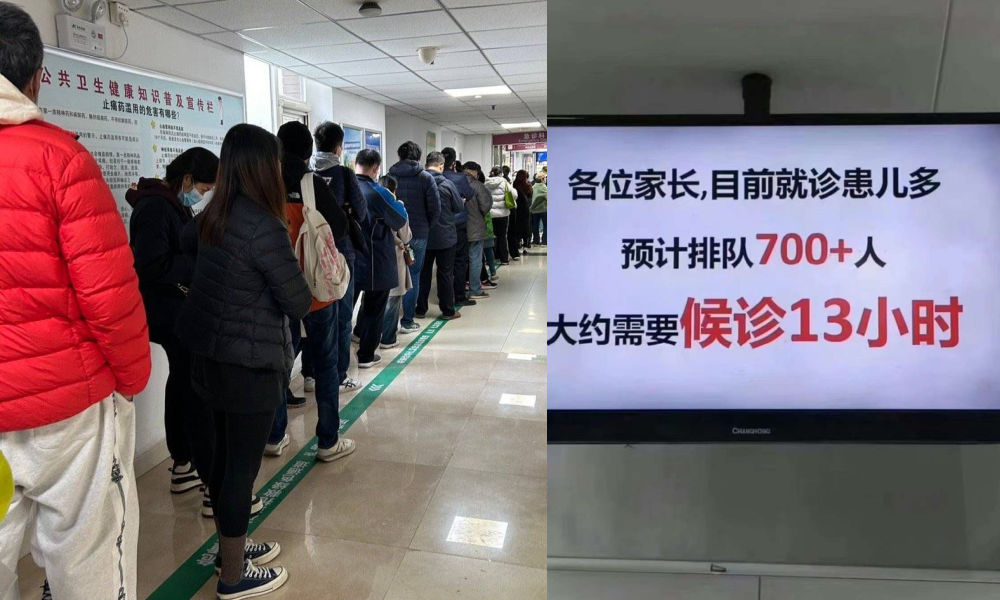
One photo shows a bulletin board at a local hospital warning parents that over 700 patients are waiting in line, estimating a waiting time of more than 13 hours to see a doctor.
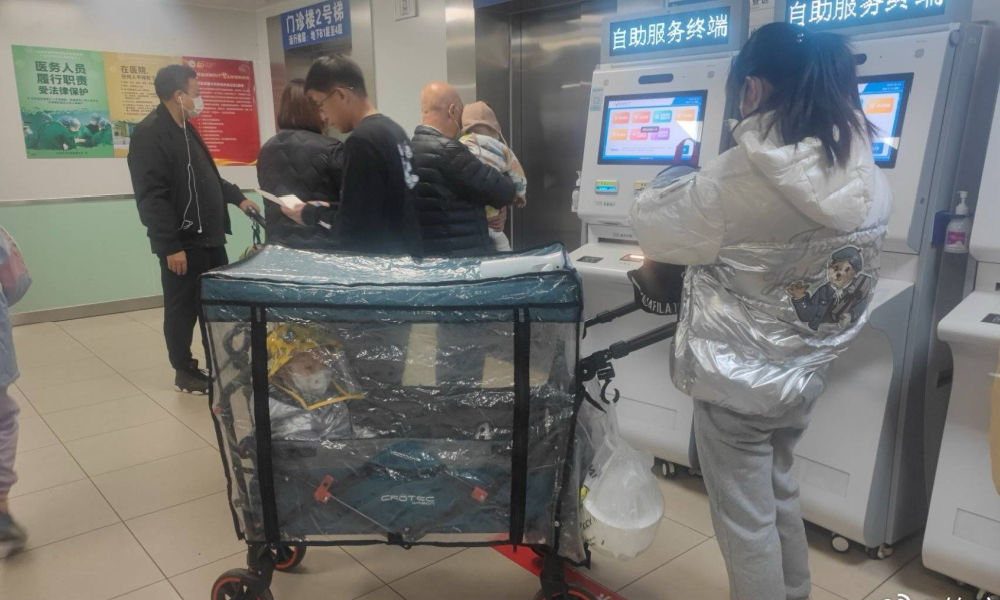
Another image shows children doing their homework while hooked up on an IV.

Recent discussions on Chinese social media platforms have highlighted a notable surge in flu cases. The ongoing flu season is particularly impacting children, with multiple viruses concurrently circulating and contributing to a high incidence of respiratory infections.
Among the prevalent respiratory infections affecting children are Mycoplasma pneumoniae infections, influenza, and Adenovirus infection.
The spike in flu cases has resulted in overcrowded children’s hospitals in Beijing and other Chinese cities. Parents sometimes have to wait in line for hours to get an appointment or pick up medication.
According to one reporter at Haibao News (海报新闻), there were so many patients at the Children’s Hospital of Capital Institute of Pediatrics (首都儿科研究所) on November 21st that the outpatient desk stopped accepting new patients by the afternoon. Meanwhile, 628 people were waiting in line to see a doctor at the emergency department.
Reflecting on the past few years, the current flu season marks China’s first ‘normal’ flu peak season since the outbreak of Covid-19 in late 2019 / early 2020 and the end of its stringent zero-Covid policies in December 2022. Compared to many other countries, wearing masks was also commonplace for much longer following the relaxation of Covid policies.
Hu Xijin, the well-known political commentator, noted on Weibo that this year’s flu season seems to be far worse than that of the years before. He also shared that his own granddaughter was suffering from a 40 degrees fever.
“We’re all running a fever in our home. But I didn’t dare to go to the hospital today, although I want my child to go to the hospital tomorrow. I heard waiting times are up to five hours now,” one Weibo user wrote.
“Half of the kids in my child’s class are sick now. The hospital is overflowing with people,” another person commented.
One mother described how her 7-year-old child had been running a fever for eight days already. Seeking medical attention on the first day, the initial diagnosis was a cold. As the fever persisted, daily visits to the hospital ensued, involving multiple hours for IV fluid administration.
While this account stems from a single Weibo post within a fever-advice community, it highlights a broader trend: many parents swiftly resort to hospital visits at the first signs of flu or fever. Several factors contribute to this, including a lack of General Practitioners in China, making hospitals the primary choice for medical consultations also in non-urgent cases.
There is also a strong belief in the efficacy of IV infusion therapy, whether fluid-based or containing medication, as the quickest path to recovery. Multiple factors contribute to the widespread and sometimes irrational use of IV infusions in China. Some clinics are profit-driven and see IV infusions as a way to make more money. Widespread expectations among Chinese patients that IV infusions will make them feel better also play a role, along with some physicians’ lacking knowledge of IV therapy or their uncertainty to distinguish bacterial from viral infections (read more here)
To prevent an overwhelming influx of patients to hospitals, Chinese state media, citing specialists, advise parents to seek medical attention at the hospital only for sick infants under three months old displaying clear signs of fever (with or without cough). For older children, it is recommended to consult a doctor if a high fever persists for 3 to 5 days or if there is a deterioration in respiratory symptoms. Children dealing with fever and (mild) respiratory symptoms can otherwise recover at home.
One Weibo blogger (@奶霸知道) warned parents that taking their child straight to the hospital on the first day of them getting sick could actually be a bad idea. They write:
“(..) pediatric departments are already packed with patients, and it’s not just Mycoplasma infections anymore. Cases include influenza, Covid-19, Norovirus, and Adenovirus. And then, of course, those with bad luck are cross-infected with multiple viruses at the same time, leading to endless cycles. Therefore, if your child experiences mild coughing or a slight fever, consider observing at home first. Heading straight to the hospital could mean entering a cesspool of viruses.”
The hashtag for “fever” saw over 350 million clicks on Weibo within one day on November 22.
Meanwhile, there are also other ongoing discussions on Weibo surrounding the current flu season. One topic revolves around whether children should continue doing their homework while receiving IV fluids in the hospital. Some hospitals have designated special desks and study areas for children.
Although some commenters commend the hospitals for being so considerate, others also remind the parents not to pressure their kids too much and to let them rest when they are not feeling well.
Opinions vary: although some on Chinese social media say it's very thoughtful for hospitals to set up areas where kids can study and read, others blame parents for pressuring their kids to do homework at the hospital instead of resting when not feeling well. pic.twitter.com/gnQD9tFW2c
— Manya Koetse (@manyapan) November 22, 2023
By Manya Koetse, with contributions from Miranda Barnes
Get the story behind the hashtag. Subscribe to What’s on Weibo here to receive our newsletter and get access to our latest articles:
Spotted a mistake or want to add something? Please let us know in comments below or email us. First-time commenters, please be patient – we will have to manually approve your comment before it appears.
©2023 Whatsonweibo. All rights reserved. Do not reproduce our content without permission – you can contact us at info@whatsonweibo.com.
China and Covid19
Repurposing China’s Abandoned Nucleic Acid Booths: 10 Innovative Transformations
Abandoned nucleic acid booths are getting a second life through these new initiatives.
Published
1 year agoon
May 19, 2023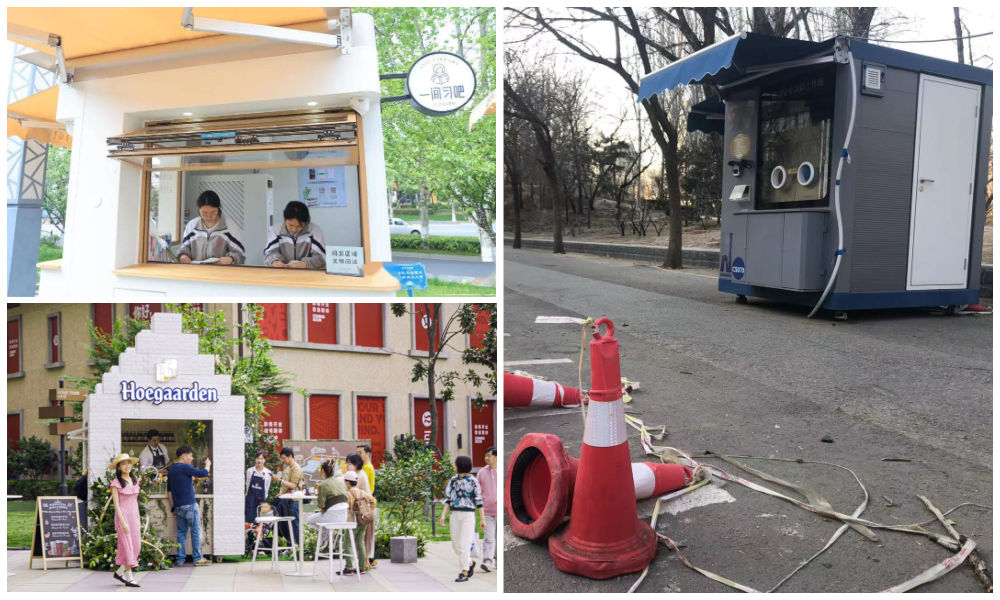
During the pandemic, nucleic acid testing booths in Chinese cities were primarily focused on maintaining physical distance. Now, empty booths are being repurposed to bring people together, serving as new spaces to serve the community and promote social engagement.
Just months ago, nucleic acid testing booths were the most lively spots of some Chinese cities. During the 2022 Shanghai summer, for example, there were massive queues in front of the city’s nucleic acid booths, as people needed a negative PCR test no older than 72 hours for accessing public transport, going to work, or visiting markets and malls.
The word ‘hésuān tíng‘ (核酸亭), nucleic acid booth (also:核酸采样小屋), became a part of China’s pandemic lexicon, just like hésuān dìtú (核酸地图), the nucleic acid test map lauched in May 2022 that would show where you can get a nucleic test.
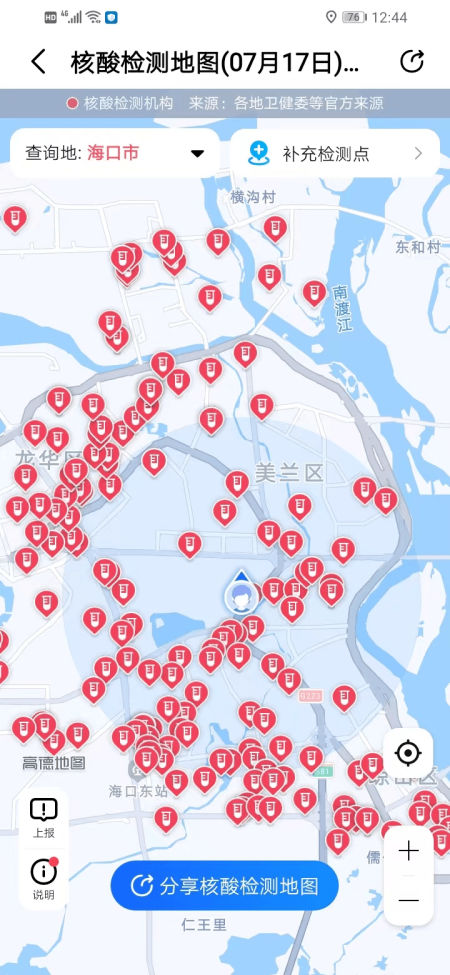
Example of nucleic acid test map.
During Halloween parties in Shanghai in 2022, some people even came dressed up as nucleic test booths – although local authorities could not appreciate the creative costume.
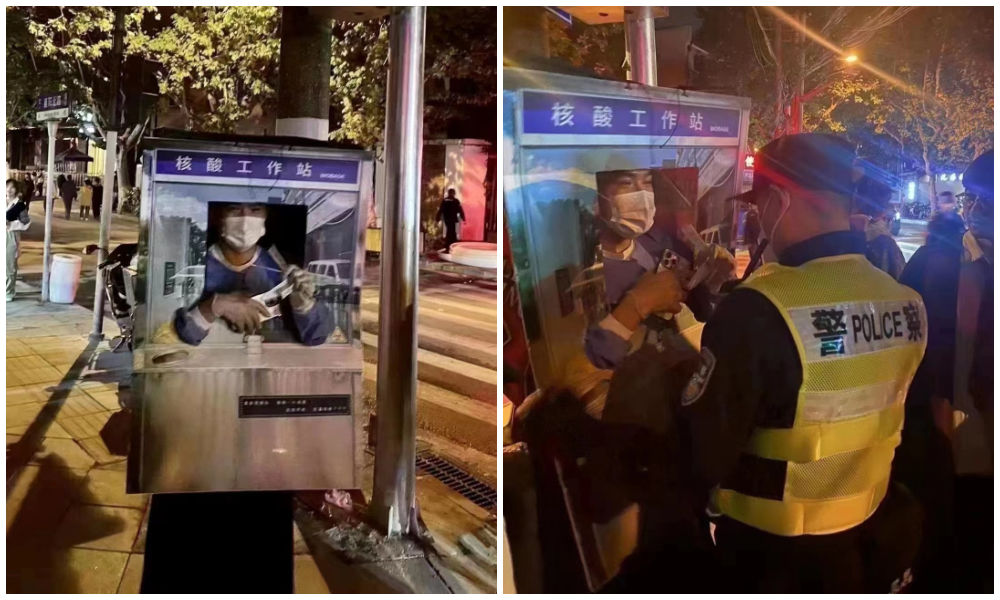
Halloween 2022: dressed up as nucliec acid booths. Via @manyapan twitter.
In December 2022, along with the announced changed rules in China’s ‘zero Covid’ approach, nucleic acid booths were suddenly left dismantled and empty.
With many cities spending millions to set up these booths in central locations, the question soon arose: what should they do with the abandoned booths?
This question also relates to who actually owns them, since the ownership is mixed. Some booths were purchased by authorities, others were bought by companies, and there are also local communities owning their own testing booths. Depending on the contracts and legal implications, not all booths are able to get a new function or be removed yet (Worker’s Daily).
In Tianjin, a total of 266 nucleic acid booths located in Jinghai District were listed for public acquisition earlier this month, and they were acquired for 4.78 million yuan (US$683.300) by a local food and beverage company which will transform the booths into convenience service points, selling snacks or providing other services.
Tianjin is not the only city where old nucleic acid testing booths are being repurposed. While some booths have been discarded, some companies and/or local governments – in cooperation with local communities – have demonstrated creativity by transforming the booths into new landmarks. Since the start of 2023, different cities and districts across China have already begun to repurpose testing booths. Here, we will explore ten different way in which China’s abandoned nucleic test booths get a second chance at a meaningful existence.
1: Pharmacy/Medical Booths
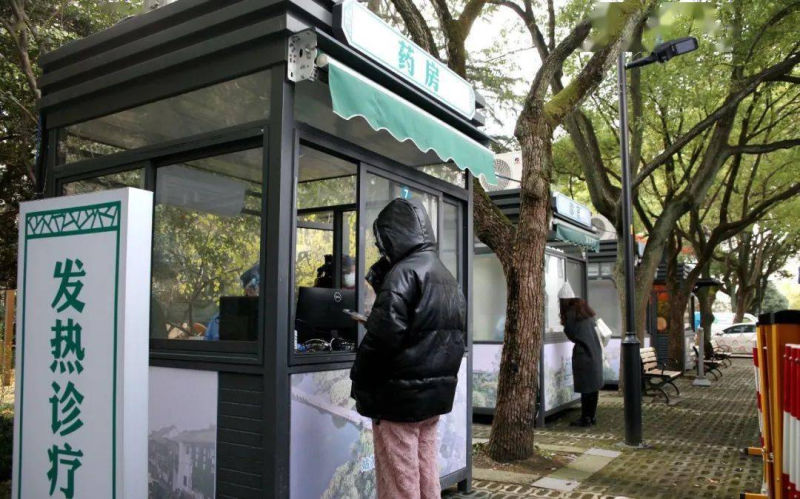
Via ‘copyquan’ republished on Sohu.
Blogger ‘copyquan’ recently explored various ways in which abandoned PCR testing points are being repurposed.
One way in which they are used is as small pharmacies or as medical service points for local residents (居民医疗点). Alleviating the strain on hospitals and pharmacies, this was one of the earliest ways in which the booths were repurposed back in December of 2022 and January of 2023.
Chongqing, Tianjin, and Suzhou were among earlier cities where some testing booths were transformed into convenient medical facilities.
2: Market Stalls
In Suzhou, Jiangsu province, the local government transformed vacant nucleic acid booths into market stalls for the Spring Festival in January 2022, offering them free of charge to businesses to sell local products, snacks, and traditional New Year goods.
The idea was not just meant as a way for small businesses to conveniently sell to local residents, it was also meant as a way to attract more shoppers and promote other businesses in the neighborhood.
3: Community Service Center

Small grid community center in Shizhuang Village, image via Sohu.
Some residential areas have transformed their local nucleic acid testing booths into community service centers, offering all kinds of convenient services to neighborhood residents.
These little station are called wǎnggé yìzhàn (网格驿站) or “grid service stations,” and they can serve as small community centers where residents can get various kinds of care and support.
4: “Refuel” Stations
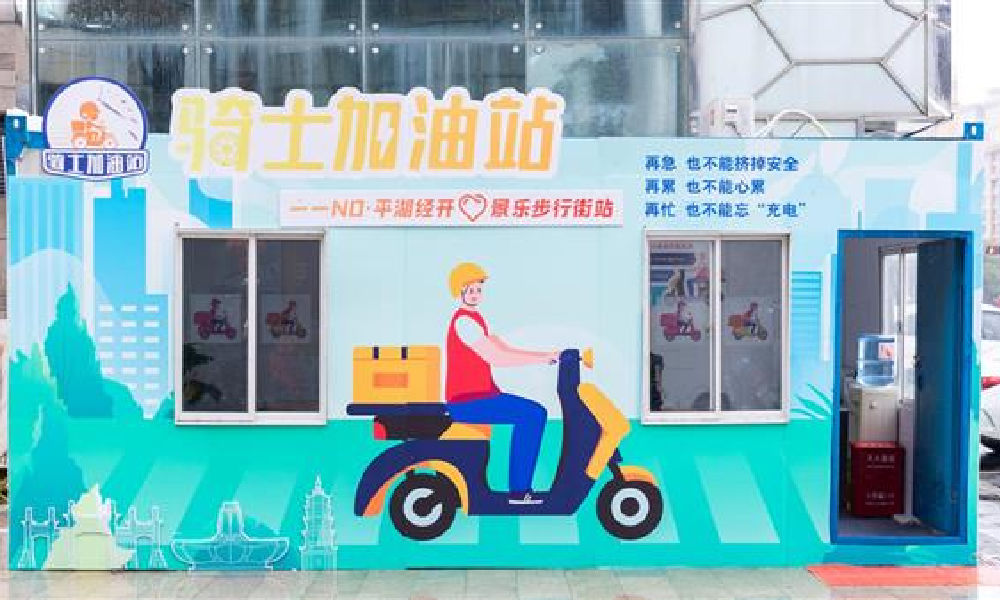
In February of this year, 100 idle nucleic acid sampling booths were transformed into so-called “Rider Refuel Stations” (骑士加油站) in Zhejiang’s Pinghu. Although it initially sounds like a place where delivery riders can fill up their fuel tanks, it is actually meant as a place where they themselves can recharge.
Delivery riders and other outdoor workers can come to the ‘refuel’ station to drink some water or tea, warm their hands, warm up some food and take a quick nap.
5: Free Libraries
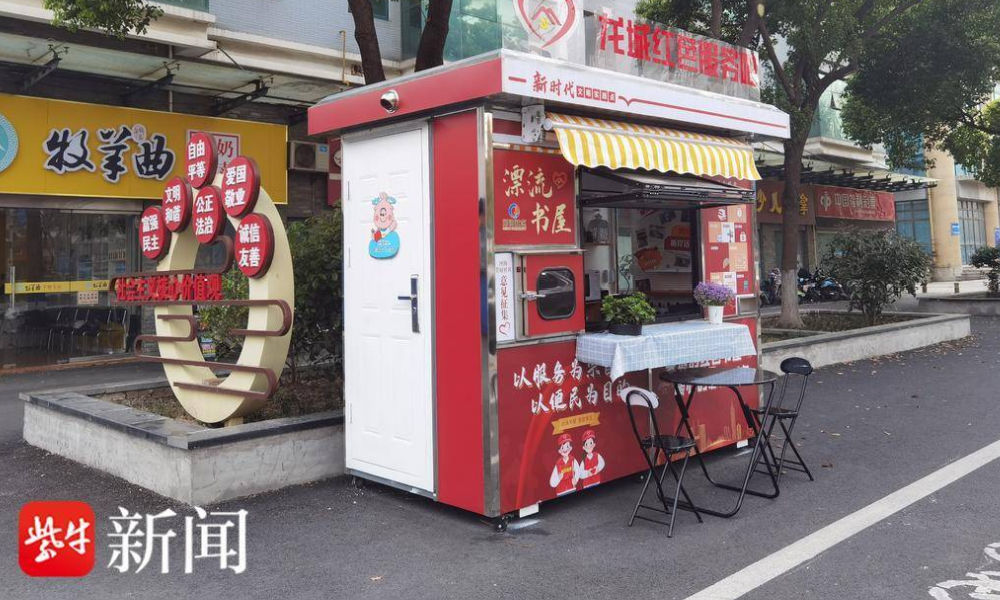
image via sohu.
In various Chinese cities, abandoned nucleic acid booths have been transformed into little free libraries where people can grab some books to read, donate or return other books, and sit down for some reading.
Changzhou is one of the places where you’ll find such “drifting bookstores” (漂流书屋) (see video), but similar initiatives have also been launched in other places, including Suzhou.
6: Study Space
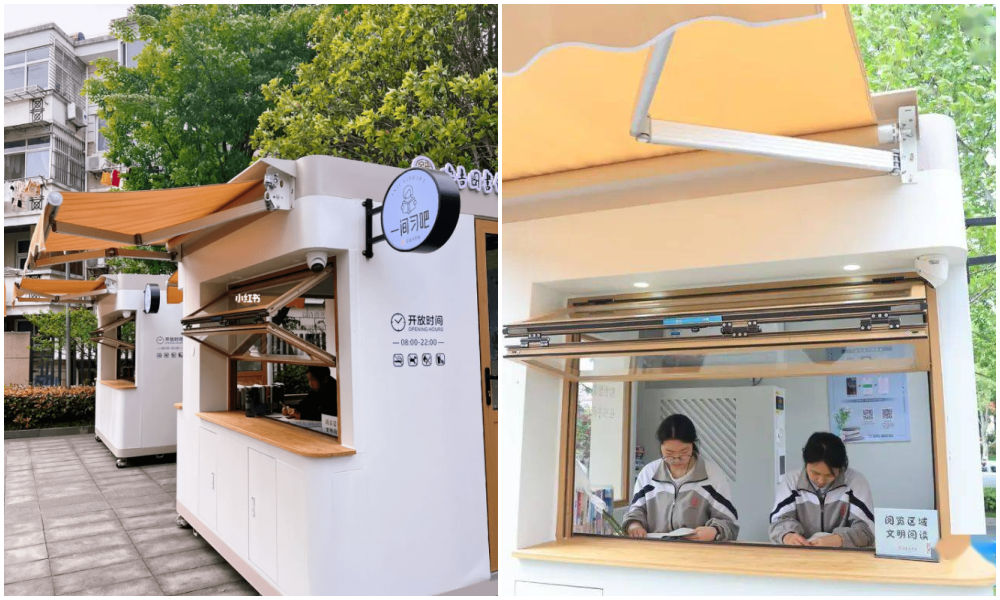
Photos via Copyquan’s article on Sohu.
Another innovative way in which old testing points are being repurposed is by turning them into places where students can sit together to study. The so-called “Let’s Study Space” (一间习吧), fully airconditioned, are opened from 8 in the morning until 22:00 at night.
Students – or any citizens who would like a nice place to study – can make online reservations with their ID cards and scan a QR code to enter the study rooms.
There are currently ten study booths in Anji, and the popular project is an initiative by the Anji County Library in Zhejiang (see video).
7: Beer Kiosk
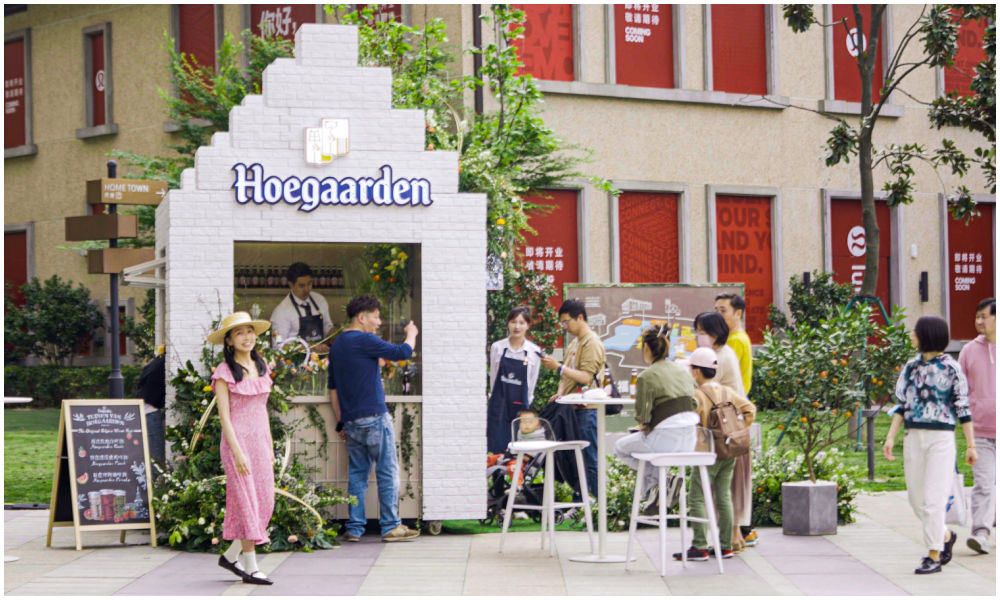
Hoegaarden beer shop, image via Creative Adquan.
Changing an old nucleic acid testing booth into a beer bar is a marketing initiative by the Shanghai McCann ad agency for the Belgium beer brand Hoegaarden.
The idea behind the bar is to celebrate a new spring after the pandemic. The ad agency has revamped a total of six formr nucleic acid booths into small Hoegaarden ‘beer gardens.’
8: Police Box
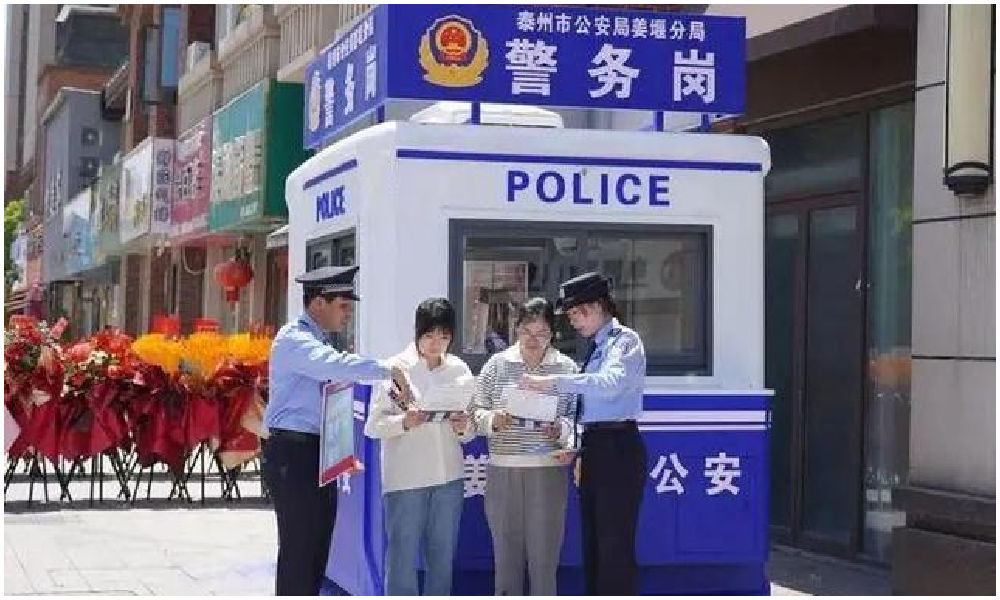
In Taizhou City, Jiangsu Province, authorities have repurposed old testing booths and transformed them into ‘police boxes’ (警务岗亭) to enhance security and improve the visibility of city police among the public.
Currently, a total of eight vacant nucleic acid booths have been renovated into modern police stations, serving as key points for police presence and interaction with the community.
9: Lottery Ticket Booths
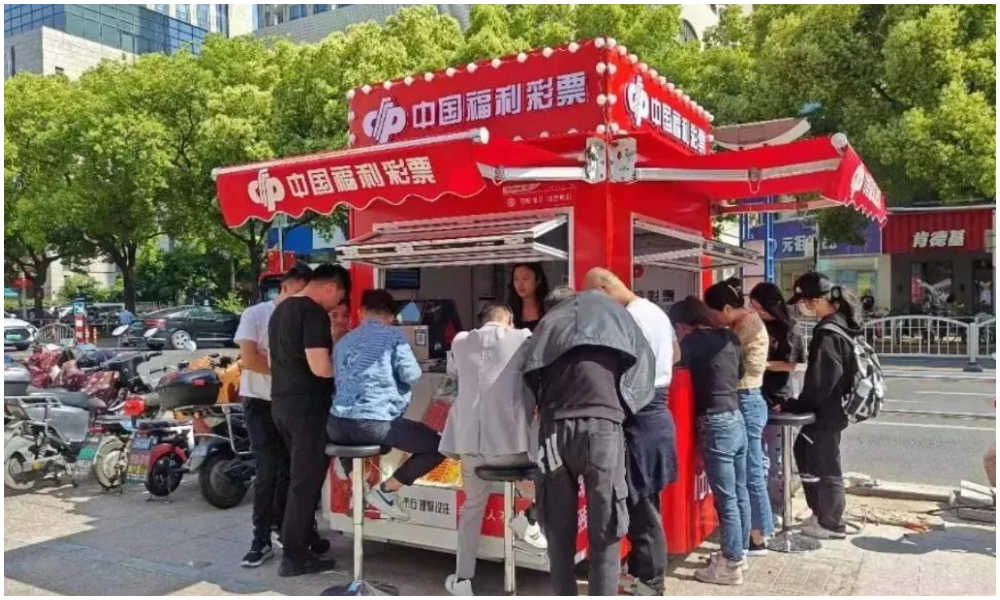
Image via The Paper
Some nucleic acid booths have now been turned into small shops selling lottery tickets for the China Welfare Lottery. One such place turning the kiosks into lottery shops is Songjiang in Shanghai.
Using the booths like this is a win-win situation: they are placed in central locations so it is more convenient for locals to get their lottery tickets, and on the other hand, the sales also help the community, as the profits are used for welfare projects, including care for the elderly.
10: Mini Fire Stations
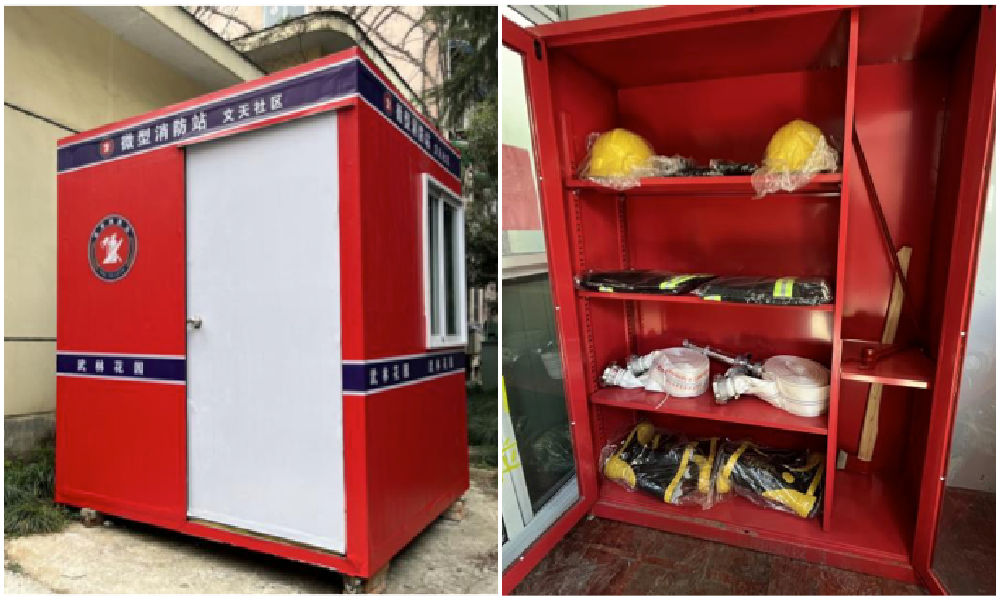
Micro fire stations, images via ZjNews.
Some communities decided that it would be useful to repurpose the testing points and turn them into mini fire kiosks, just allowing enough space for the necessary equipment to quickly respond to fire emergencies.
Want to read more about the end of ‘zero Covid’ in China? Check our other articles here.
By Manya Koetse,
Get the story behind the hashtag. Subscribe to What’s on Weibo here to receive our newsletter and get access to our latest articles:
Spotted a mistake or want to add something? Please let us know in comments below or email us. First-time commenters, please be patient – we will have to manually approve your comment before it appears.
©2023 Whatsonweibo. All rights reserved. Do not reproduce our content without permission – you can contact us at info@whatsonweibo.com.
Subscribe

Weibo Watch: The Future is Here

“Bye Bye Biden”: Biden’s Many Nicknames in Chinese

Enjoying the ‘Sea’ in Beijing’s Ditan Park

A Triumph for “Comrade Trump”: Chinese Social Media Reactions to Trump Rally Shooting

Weibo Watch: Get Up, Stand Up

The Tragic Story of “Fat Cat”: How a Chinese Gamer’s Suicide Went Viral

“Old Bull Eating Young Grass”: 86-Year-Old Chinese Painter Fan Zeng Marries 36-Year-Old Xu Meng

A Brew of Controversy: Lu Xun and LELECHA’s ‘Smoky’ Oolong Tea

Singing Competition or Patriotic Fight? Hunan TV’s ‘Singer 2024’ Stirs Nationalistic Sentiments

Zara Dress Goes Viral in China for Resemblance to Haidilao Apron

Weibo Watch: The Battle for the Bottom Bed

About the “AI Chatbot Based on Xi Jinping” Story

China’s Intensified Social Media Propaganda: “Taiwan Must Return to Motherland”

Weibo Watch: Telling China’s Stories Wrong

Saying Goodbye to “Uncle Wang”: Wang Wenbin Becomes Chinese Ambassador to Cambodia
Get in touch
Would you like to become a contributor, or do you have any tips or suggestions? Get in touch here!
Popular Reads
-

 China Insight3 months ago
China Insight3 months agoThe Tragic Story of “Fat Cat”: How a Chinese Gamer’s Suicide Went Viral
-

 China Music4 months ago
China Music4 months agoThe Chinese Viral TikTok Song Explained (No, It’s Not About Samsung)
-

 China Digital10 months ago
China Digital10 months agoToo Sexy for Weibo? Online Discussions on the Concept of ‘Cābiān’
-

 China Arts & Entertainment12 months ago
China Arts & Entertainment12 months agoBehind 8 Billion Streams: Who is Dao Lang Cursing in the Chinese Hit Song ‘Luocha Kingdom’?





